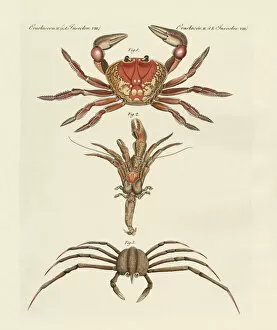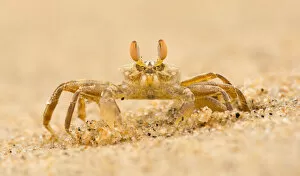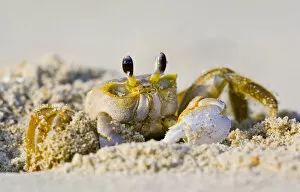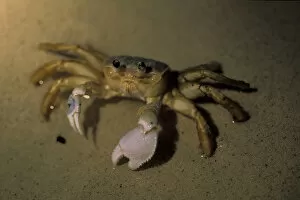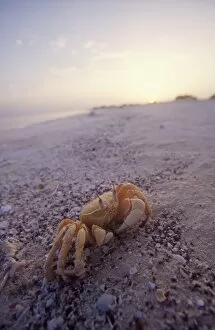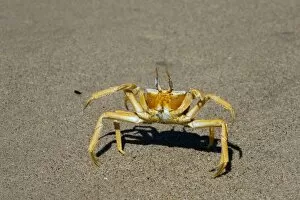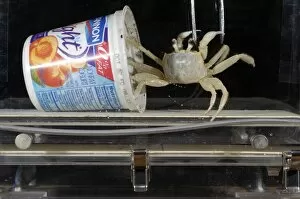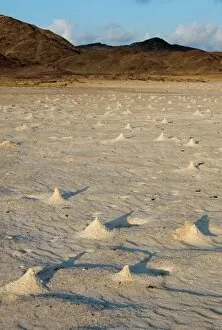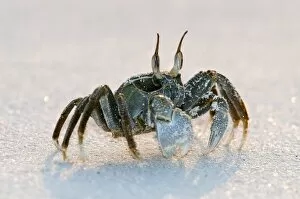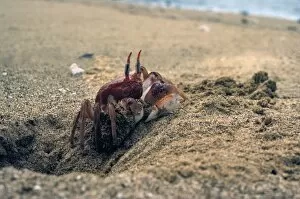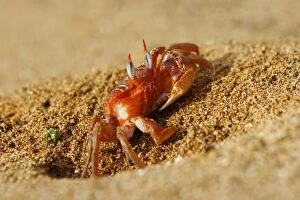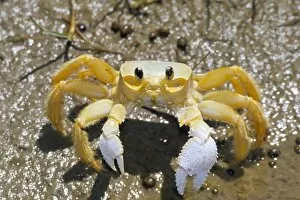Ghost Crab Collection
The ghost crab, also known as the sand crab or Genus ocypode, is a fascinating creature found in various parts of the world
For sale as Licensed Images
Choose your image, Select your licence and Download the media
The ghost crab, also known as the sand crab or Genus ocypode, is a fascinating creature found in various parts of the world. One such location is the Parque Nacional de Fernando de Noronha, where these elusive crabs can be spotted scurrying across sandy shores. In Suheli they can referred to as "ghosts, " perhaps due to their pale coloration and nocturnal habits. Dating back to 1833-39, a colored engraving showcases the beauty of these creatures, and are often depicted alongside different kinds of shrimps and crabs in other colored engravings that highlight their unique characteristics. With their peculiar appearance and behavior, it's no wonder they have earned the title of "strange crabs. " From Magdalena Island in Baja to San Cristobal in the Galapagos Islands, ghost crabs have made themselves at home along South America's coastlines. In Yala National Park in Sri Lanka and St Lucia in Kwazulu-Natal, South Africa, one can find them nestled next to their burrows on sandy beaches. A high-angle close-up reveals the intricate details of a Pink Ghost crab found off the coast of South Africa. Its vibrant hue stands out against its surroundings while showcasing its adaptability within its environment. Even North America has its fair share sightings; Nags Head in North Carolina serves as an excavation site for these curious creatures' burrows. Whether you encounter them on distant islands or closer to home, observing ghost crabs offers a glimpse into nature's diversity and reminds us that there is always more than meets the eye when it comes to our coastal ecosystems.





